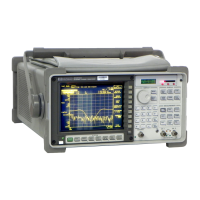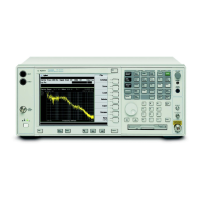Curve fitting is the process of estimating linear system parameters of a
mathematical model of a physical system. The model closely approximates the
measured frequency response of the physical system in a least-squares-error
optimal manner. The result of a curve fit operation is a table of poles and
zeros. Chapter 16, “Curve Fit,” explains how to use the Agilent 35670A’s
curve fit features.
Checking Your Design
If your model is accurate, you can design a compensator to improve the
performance of the control system to desired specifications. You can
synthesize the compensator and use the Agilent 35670A’s math operations to
multiply the compensator’s synthesized response with the open loop response.
This gives you the open loop response you would expect if you build the
compensator, add it to the system and measure the compensated system.
Chapter 15, “Synthesis,” and chapter 18, “Math Operations,” explain how to
use the Agilent 35670A’s synthesis feature (Option 1D3) and math operations.
Agilent 35670A
Operator's Guide Measuring Control Systems
5-5

